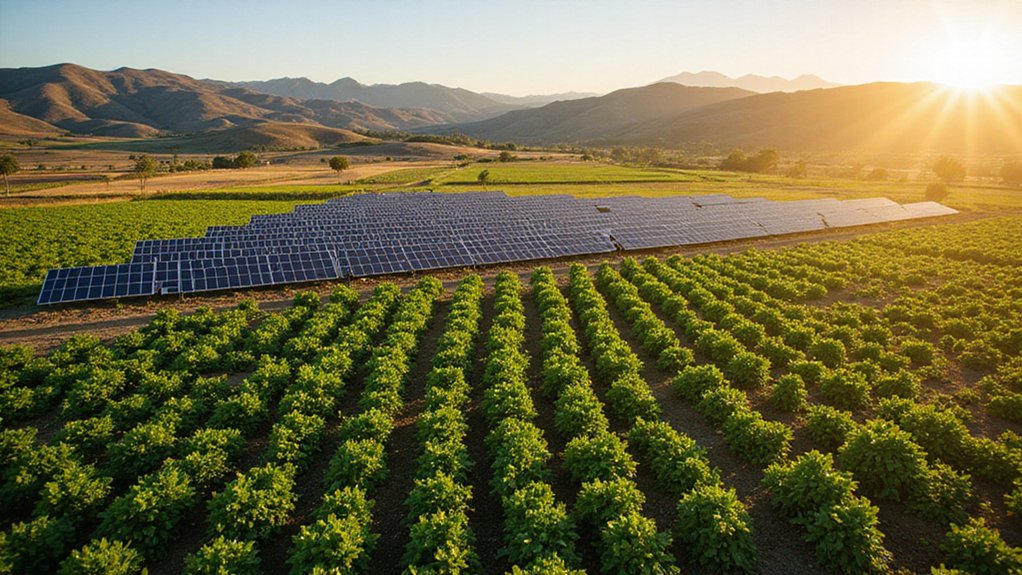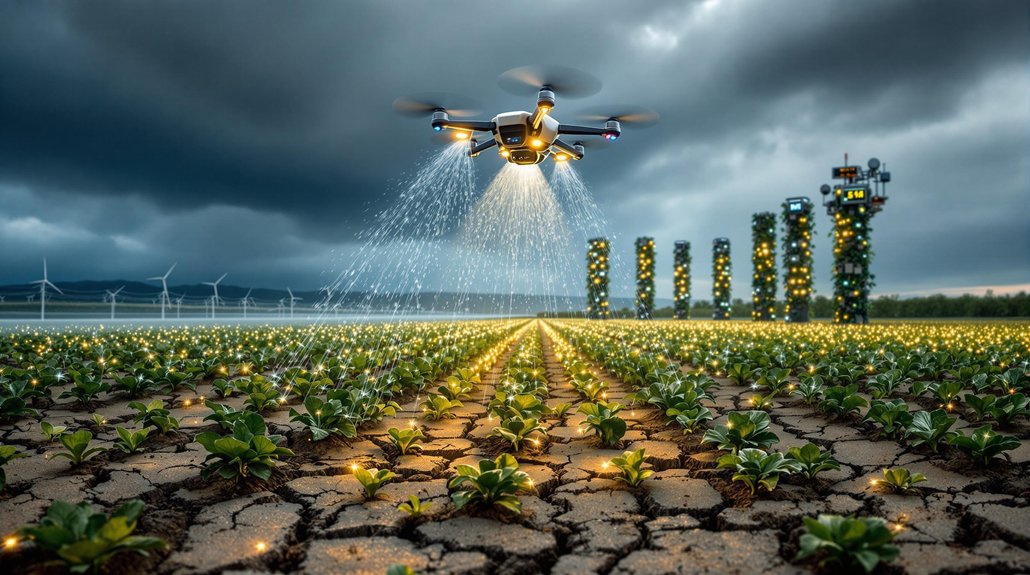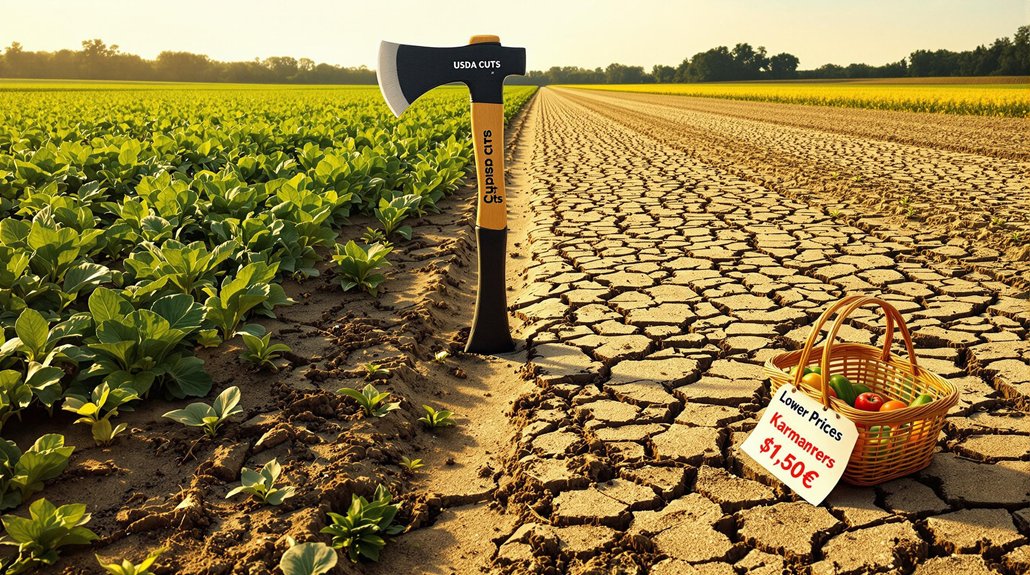California farmers are pioneering a solution to competing land demands by sharing fields with solar panels. This “colocation” approach allows crops to grow alongside renewable energy production. Farmers maintain their agricultural operations while earning additional income from solar power generation. The strategy helps balance California’s position as both a leading food producer and the nation’s top solar energy state. The innovative method offers promising opportunities for sustainable land use in an increasingly resource-constrained environment.
As California leads the nation in solar energy production, a growing debate has emerged over how to balance renewable energy needs with agricultural land use. The Golden State tops the country with over 50,640 megawatts of solar power installed, enough to power nearly 15 million homes. This impressive growth means that solar now generates 23.4% of California’s electricity, with a remarkable 33% increase in early 2025 alone.
However, this renewable energy boom comes with challenges. California’s farmland ranks among the most valuable and productive in the nation. Research shows that solar installations have taken over land that could have fed approximately 86,000 people. As the population grows and consumption increases, the competition between food production and clean energy has intensified.
California’s solar surge creates a critical dilemma: preserving productive farmland while advancing clean energy in an increasingly crowded state.
Some farmers are finding middle ground through colocation methods. This approach allows solar arrays to share space with crops, maximizing land productivity through dual-use strategies. With solar expected to account for half of electricity demand growth globally through 2027, these innovative approaches are gaining traction. Researchers are carefully studying both benefits and drawbacks of these arrangements, looking at how farmers can maintain food production while adding a renewable energy income stream.
The financial impact of colocation could be significant for farmers. By strategically placing solar panels alongside their crops, they can diversify income sources without abandoning agriculture entirely. Solar systems connected to the power grid provide farmers with reliable backup power during periods when solar production is low. This approach differs from conventional solar farms that typically replace farmland completely.
Environmental benefits add another dimension to the discussion. Solar power helps reduce carbon emissions at a time when extreme weather threatens agricultural resources. Some colocation methods may even help conserve water, an increasingly precious resource in California. Projects similar to the Apple California Flats initiative demonstrate how large-scale solar installations can coexist with agricultural operations.
The state’s renewable energy momentum continues to build. For over half the days in early 2025, California’s combination of solar, wind, and water electricity generation exceeded 100% of grid demand. Experts project the state may achieve 250-300 days of 100% renewable energy this year, with complete renewable coverage possible within five years.
As California charts its clean energy future, finding the right balance between solar panels and crops remains a vital challenge.
References
- https://www.californiadgstats.ca.gov
- https://seia.org/state-solar-policy/california-solar/
- https://www.chooseenergy.com/solar-energy/solar-energy-production-by-state/
- https://msutoday.msu.edu/news/2025/should-farm-fields-be-used-for-crops-or-solar-msu-research-suggests-both
- https://www.energysage.com/news/california-solar-electricity-generation-up-33-percent/








